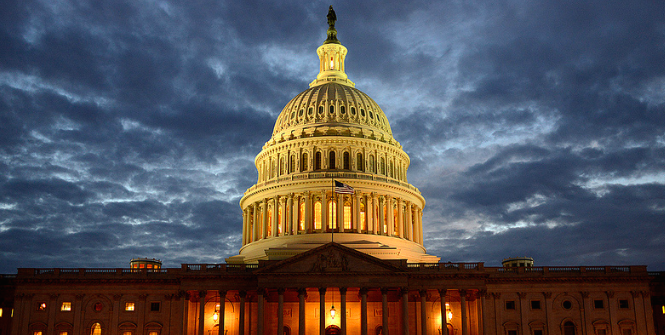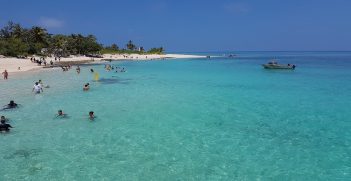Congressional Outreach by Australia and New Zealand

As the mid-terms change the make-up of US Congress, how do Australia and New Zealand protect and advance their interests by engaging with the US legislature?
Australia and New Zealand have sought to protect and advance their relationships with the USA by engaging with the US Congress. Australia has since 1987 integrated congressional outreach into its Washington-based diplomatic arsenal, progressing its dual security and trade agendas. New Zealand, on the other hand, has pursued a more episodic approach to Congress, hamstrung by Washington’s objections to its anti-nuclear policy.
Examining the parallel experiences of Australia and New Zealand in their interactions with the US Congress may provide some insights into how the two countries conduct their diplomacy in Washington, as well as highlighting the interplay between security and trade.
Diplomats and lobbying
The US Congress is unlike many other legislative bodies. In parliamentary systems, for example, the executive is drawn from the majority party in the legislature. The US Congress is a coequal partner in the government, meaning that the executive branch is not the sole or most important branch. Diplomats’ interest in Congress obviously comes from the role Congress has to play in foreign policy, as well as from their country’s commercial, political and cultural interests in the USA.
Effective lobbying is labour-intensive, rests on the twin pillars of information and relationships, and is heavily skewed to domestic interests. Information leverages the task of developing working relationships with members of Congress and their staff. The 535 voting members of Congress swim in a sea of contending interests demanding attention. Members of Congress prioritise local constituents, then broader domestic interests, leaving embassies last.
Lobbying on behalf of a foreign entity requires compliance with the Foreign Agents Registration Act. Compliance does not extend to diplomats, however, and not all countries rely on paid lobbyists. Australia, for example, relies on embassy staff to conduct congressional outreach or lobbying.
In order to be effective, diplomats must understand the legislative and political environment and have appropriate organisational resources. The way in which embassies engage with Congress is largely a function of their understanding of the threats and opportunities present in Congress. The depth of embassy engagement with Congress depends on the available organisational resources. Taken together, these elements describe the embassy-based congressional outreach framework.
Australian diplomatic congressional outreach
The Minister for Foreign Affairs, Bill Hayden, announced on 16 November 1986 the creation of the Congressional Liaison Office (CLO), led by a diplomat. The CLO grew out of a desire to address trade while at the same time protecting the Australia–US alliance from unwanted congressional attention.
Australia opted against hiring lobbyists and opted instead to develop its own in-house lobbying capacity. Leading the CLO is a diplomat and five locally engaged staff, making Australia’s CLO one of the largest embassy-based congressional outreach offices in Washington. In addition to communicating with Congress, the CLO closely monitors the US electoral cycle.
The CLO has engaged in five significant congressional efforts in recent years: the Australia–US free trade agreement, the E3 visa, the Defence Trade Cooperation Treaty and the Trans-Pacific Partnership (TPP). While not a legislative effort, the CLO also grappled with the fallout from the January 2017 Trump–Turnbull phone call.
New Zealand’s diplomatic congressional outreach
New Zealand’s diplomatic congressional outreach differs from Australia’s in several ways. These differences can be understood partly by virtue of the difference in size: New Zealand, unlike Australia, is a small power.
New Zealand’s approach was at first more haphazard and driven by crisis management. After crisis management, the embassy rejected the use of lobbyists and developed a small, diplomat-led, in-house approach to congressional engagement. Later, with the opportunity of the TPP, this approach gave way to supplementing diplomatic outreach with the use of lobbyists. From 2005 through to early 2016, the New Zealand embassy used a locally engaged staff member as its congressional liaison officer.
In the wake of the TPP, the embassy took up work on a long-festering irritation: gaining access to E1 and E2 visas. The E1 visa is for those involved with significant trade with the USA, and the E2 for those with significant investments in the USA. Currently, there are some 84 countries that share this visa status with the USA, and New Zealand is not one of them. In an effort to rectify this, the Knowledgeable Innovators and Worthy Investors Act (KIWI Act) was sponsored. New Zealand has retained the Sonoran Policy Group, a lobbyist, for US $115,000. The legislation passed both houses of congress without amendment and was signed by the president on August 1, 2018.
Comparing Australian and New Zealand congressional outreach
The differences between Australia’s and New Zealand’s approach to congressional outreach can be explained in part by the differences between the two countries.
Australia has embraced its relationship with the USA as the cornerstone of its foreign policy. Protecting and enhancing that relationship means engaging with the broadest array of US lawmakers possible. Australia has used diplomatic lobbying to protect and enhance the alliance, as exemplified by the Defence Trade Cooperation Treaty. Australia has also used its close relationship with the USA to achieve trade objectives, with the AUSFTA as a prime example. In addition, it is clear from the fallout from the Trump–Turnbull phone call that the congressional outreach strategy has delivered tangible benefits by turning what appeared to be a negative event into a positive outcome.
New Zealand, on the other hand, has had a somewhat more difficult time. New Zealand’s embassy is smaller and therefore does not have the same number of resources dedicated to congressional outreach. New Zealand’s engagement has not had the same strategic integration into the mission of its embassy, as evidenced by either having no diplomat solely dedicated to congressional outreach or using only locally engaged staff. Importantly, the hangover of the 1980s nuclear issues persisted for some years and was not put to rest until the signing of the 2012 Washington Declaration. By 2018, that memory has largely been consigned to ancient history, but it had a negative impact on New Zealand’s pursuit of an FTA.
More broadly, the Australian and New Zealand examples demonstrate the interplay between economics and security. Australia recognised that a negative outcome in either the trade or defence arena could have repercussions in the other, and by extension put the entire Australia–US relationship at risk. Australia’s congressional outreach, strategic in essence, sought to manage trade and defence relationships. On the other hand, New Zealand’s experience underscores how a breakdown of relations in either trade or defence can have repercussions in the other. Ultimately, New Zealand was unable to secure an FTA in part due to the breakdown of relations around nuclear policy. The interplay between economics and security has resonance today in discussions about Australia’s capacity to maintain a strong economic relationship with China and a strong security relationship with the USA.
Alan Tidwell is Professor and Director of the Center for Australian, New Zealand and Pacific Studies at the Edmund A. Walsh School of Foreign Service at Georgetown University.
This piece is an extract from Alan’s article in Volume 72, Issue 5 of the Australian Journal of International Affairs titled ‘Differing approaches to congressional outreach: comparing Australia and New Zealand‘. It is republished with permission.





